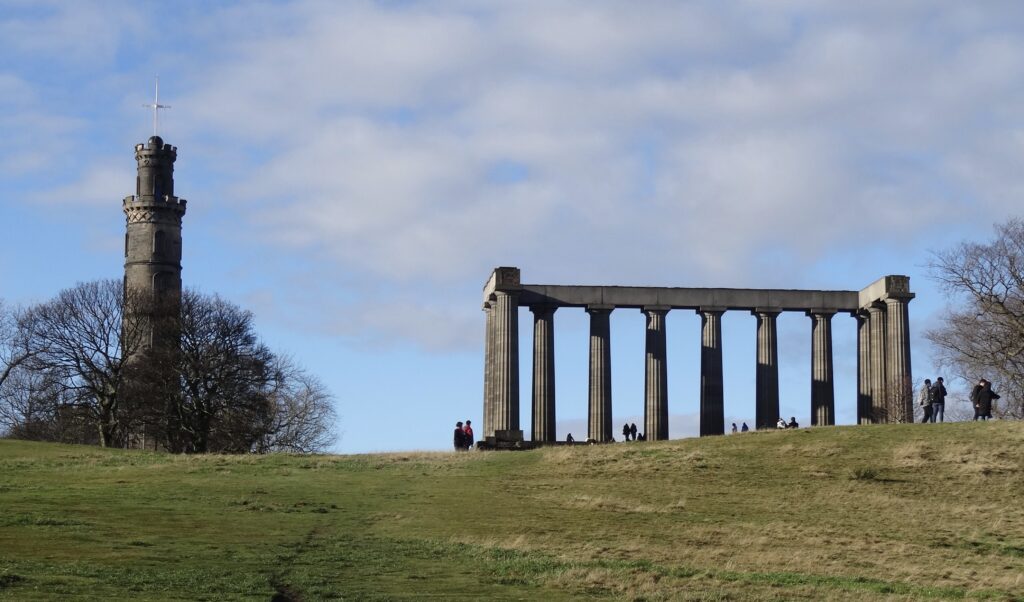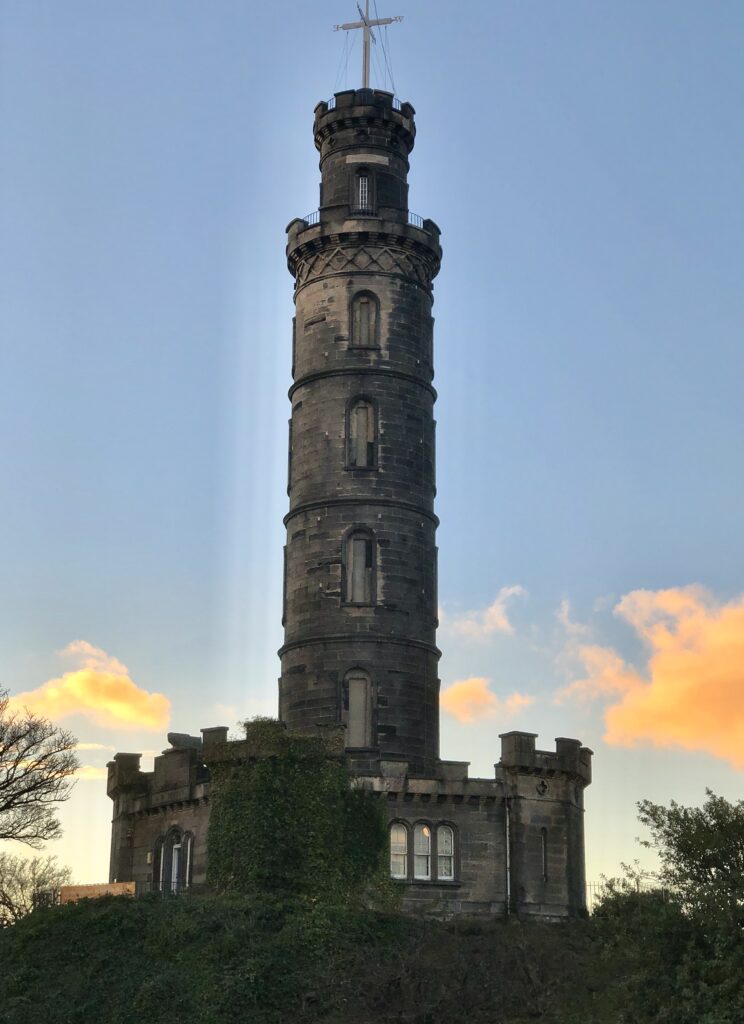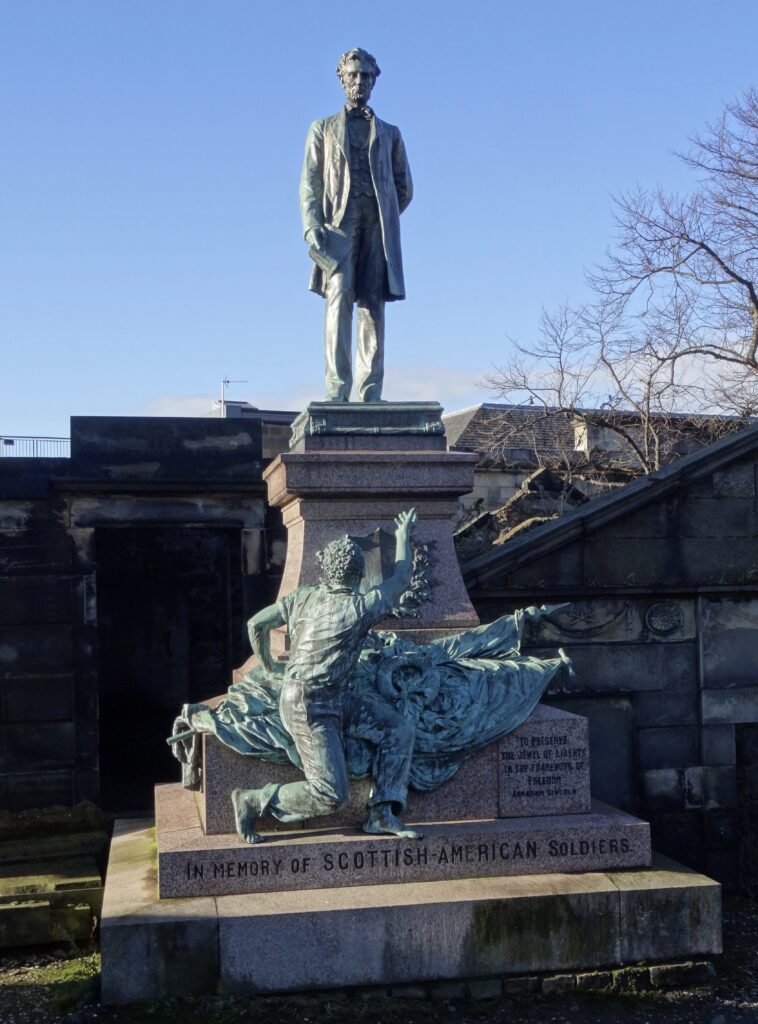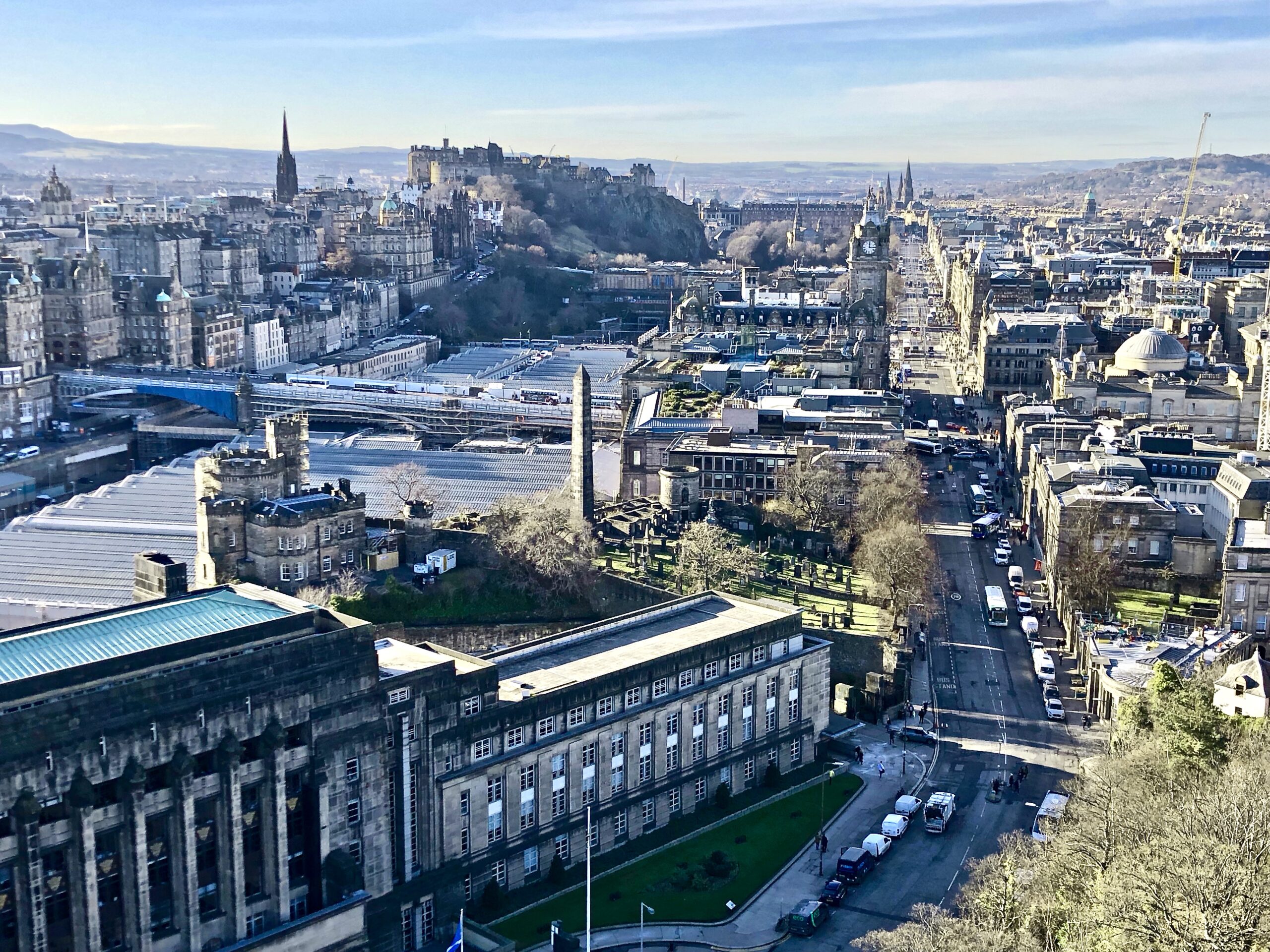Part 6
- Eating, Drinking, Shopping
- Edinburgh History
- Expert Tips
- News
- Our Tours
- Scotland Events
- Scotland History
- Video Posts
In Part 6 of our tour of Edinburgh, we will take you on a Virtual Tour of Calton Hill and the surrounding area. Calton Hill is just one of several hills in and around the city centre of Edinburgh. Like most of the rocky outcrops, they are volcanic in origin. Unlike the rock that Edinburgh Castle sits on and Arthur’s Seat, Calton Hill does not immediately suggest that it is of volcanic origin. If you simply want to take our Virtual Tour of Calton Hill, just click on the video below.
REGENT ROAD
As one approaches Calton Hill from the east, you will travel along the Regent Road. This is the main route connecting the London Road and the A1 to the entrance to Princes Street in the New Town. Although Regent Road is the main route, there is a second road called Regent Terrace. The Terrace is raised above and immediately north and runs parallel to Regent Road. The houses built on Regent Terrace are considered to be amongst the finest in the New Town and were designed for the “fashionable and wealthy” in mind.
THE OLD ROYAL HIGH SCHOOL
On the south side of Regent Road, there is the quite impressive Burns Monument and on the north side is the former Royal High School. Thomas Hamilton was the architect appointed to design both. The Royal High School was the first to be built with construction commencing in 1826 and finally being completed in 1829. His vision was for a neo-classical Greek style of architecture based on the Hephaisteion in Athens. The school remained in use until the new school was relocated in 1969.

Ever since it has remained sadly neglected. Very briefly it had been short listed to be restored and used as the devolved Scottish Parliament. It has also been considered for use as a Scottish National Photography Centre, an artists’ communal workplace, and as a luxury hotel. Because of cost and the fact that the building is a Category A Listed building, none of those have gone ahead.
CALTON HILL
Calton Hill arguably has one of the best vantage points for views. It has views not just out over the Old and the New Town, but for as far as the eye can see north and south of the city. On the plateau of the hill can be found a number of quite impressive monuments. There are a number of buildings and monuments on the hill including the restored City Observatory and the Dugald Stewart Monument. However, the two most prominent monuments are the National Monument of Scotland and the Nelson Monument which we cover below.
NATIONAL MONUMENT OF SCOTLAND
The National Monument of Scotland immediately draws the eye to the area and really dominates the hill. Sir Walter Scott, along with some of his closest friends, was the mastermind behind the monument. As a result of the Napoleanic War, it was suggested that a monument should be built to commemorate the Scots who fought and lost their lives in this conflict. The design was to be a copy of the Parthenon in Greece.
After sixteen months, only £16,000 had been raised by public subscription. There was a promise of further funding from the City Council and the Parliament and so construction commence in 1826. However, when the initial funding had been exhausted, neither the Council or the Parliament provided the additional funds and so it was never completed. Instead of being known as a monument to the memory of the men who gave their lives, at has been known by a number of names; Scotland’s Folly, Edinburgh’s Disgrace, The Pride and Poverty of Scotland.

NELSON MONUMENT
The Nelson Monument reminds many of our visitors of the leaning tower of Pisa or a lighthouse. However, this monument was built between 1807 and 1816 to commemorate the victory of Lord Admiral Nelson at the Battle of Trafalgar in 1805. It was at this battle that Nelson lost his life. From its original inception, the design was changed to save money. Instead of the original pagoda-like design, it was designed in the shape of a telescope, an item closely associated with Nelson.

In 1851 and addition was made to the Nelson Monument in the form of a time signal. If one looks to the top of the monument, you can find a ship’s mast. At the base of the mast is a wooden cannonball which is raised a few minutes before 1pm. Then at precisely 1pm, the ball drops. This time signal was implemented due to its proximity to the nearby City Observatory. Mariners in the port of Leith no longer needed to make the long journey from the port to the observatory to calibrate their chronometers. Instead, they simply trained their telescope on the Nelson Monument and waited for the cannonball to drop. Eventually, this time signal was complemented by the One O’Clock Gun at Edinburgh Castle in 1861.
CALTON GRAVEYARD
The Calton Graveyard was originally opened in 1718 and is the resting place of many notable Scots. Arguably the most famous inhabitant is that of David Hume, the Scottish Enlightenment philosopher, historian, economist and an extensive writer of his atheist beliefs. Despite the latter fact, he still has the largest mausoleum in the whole of the graveyard.

However, it is the monument adjacent to his mausoleaum which draws most attention, the Scottish-American Soldier Monument. It is a striking monument and certainly not what you would expect to find in a Scottish graveyard. The monument was dedicated to Scottish-Americans who fought on both sides of the American Civil War. The monument was dedicated to them in 1893. Several of the soldiers named on the monument were repatriated and interred in the graveyard. However, it is the statue that stands atop the monument which surprises everyone; it depicts a standing Abraham Lincoln. At his feet is a young slave boy looking up to him and thanking him for freeing him from slavery.
This is the only monument to the American Civil War outside of the United States, and the statue of Lincoln was the first statue of a US President to be erected outside of its borders.
For a comprehensive list of the tours that we offer please click here.

